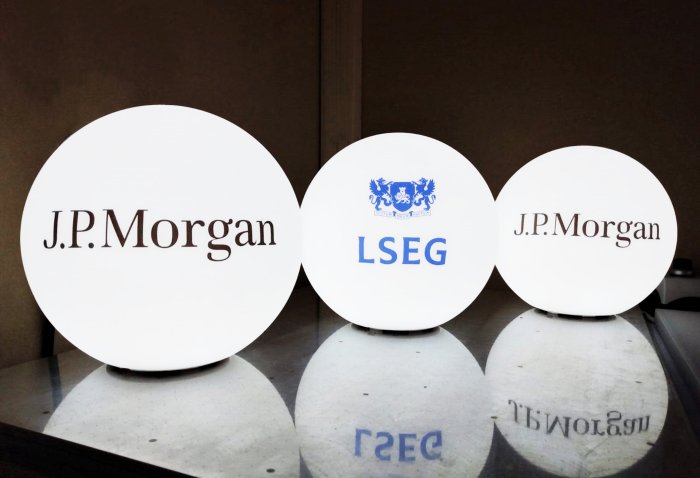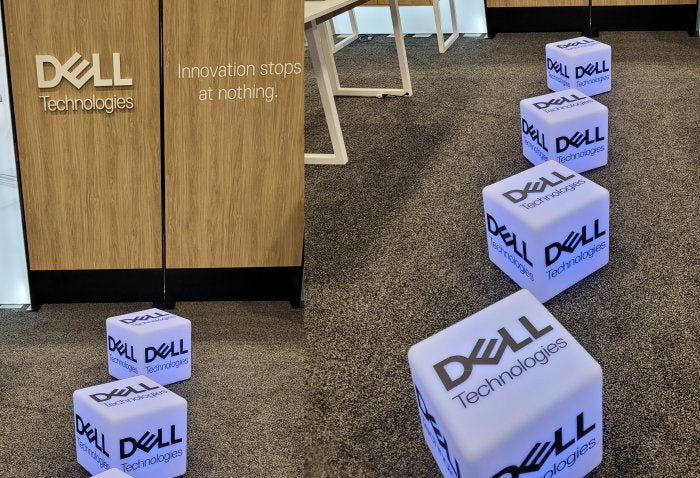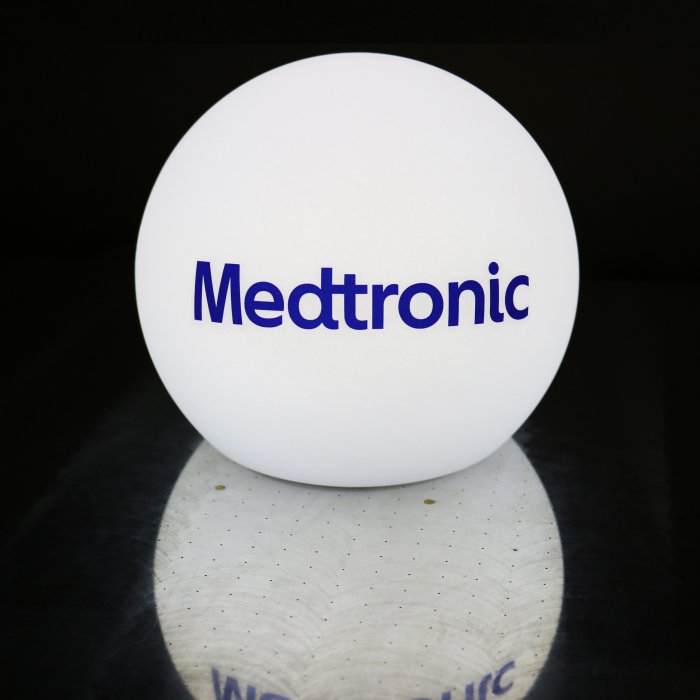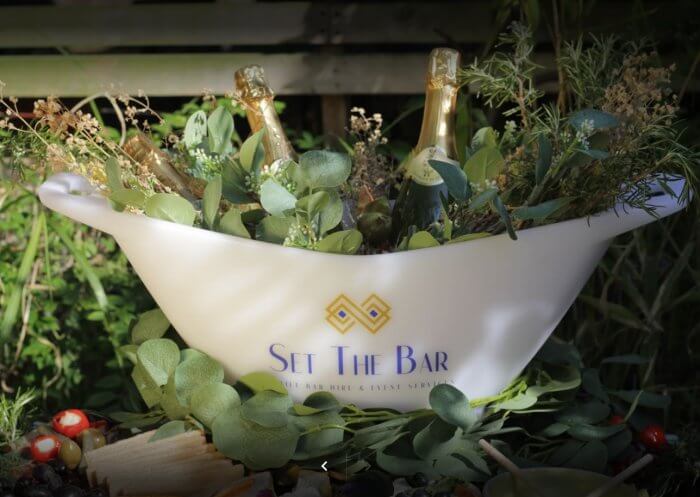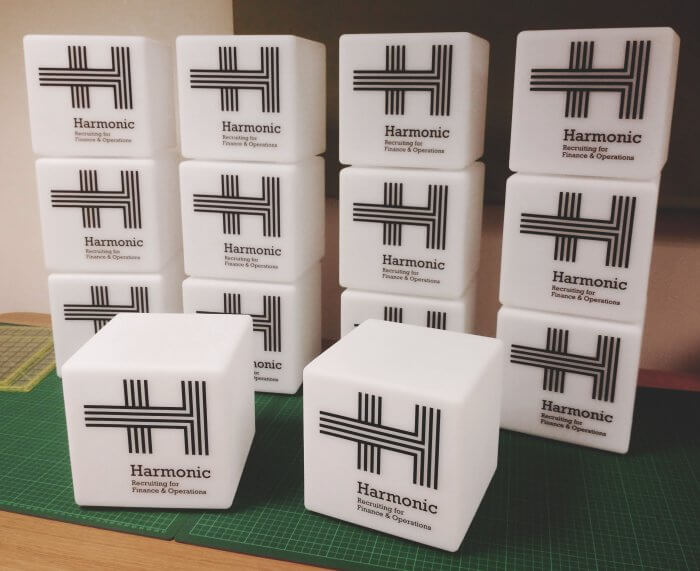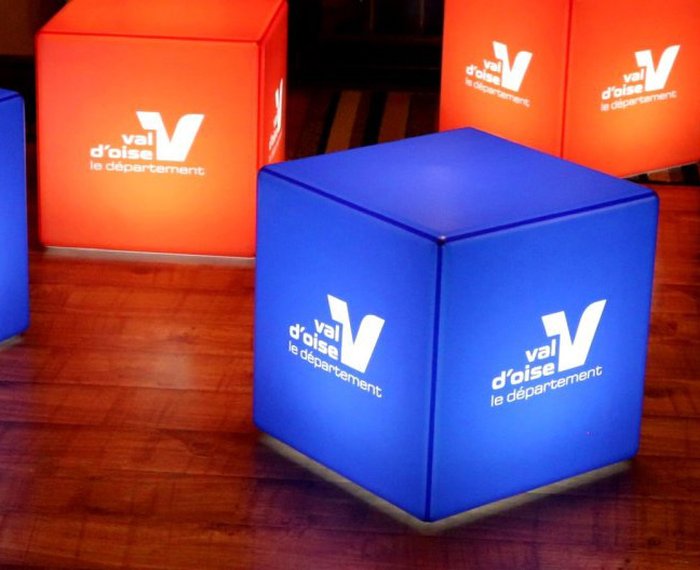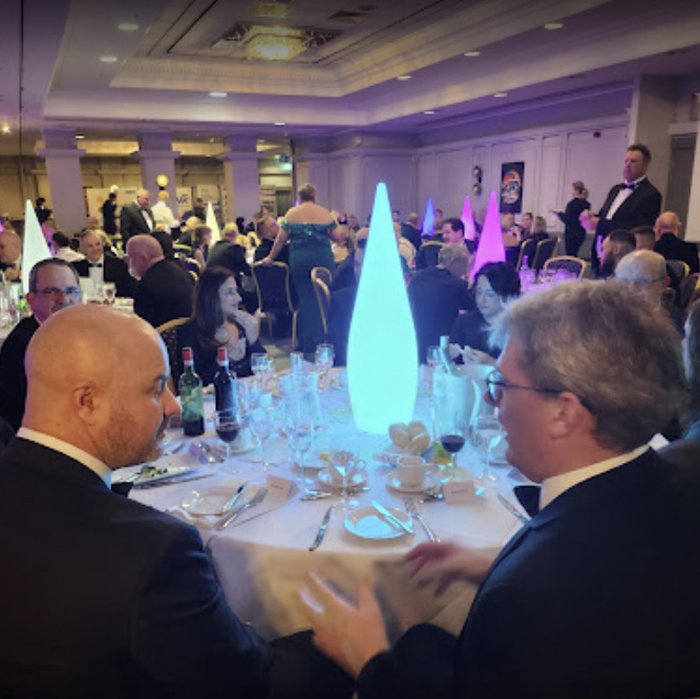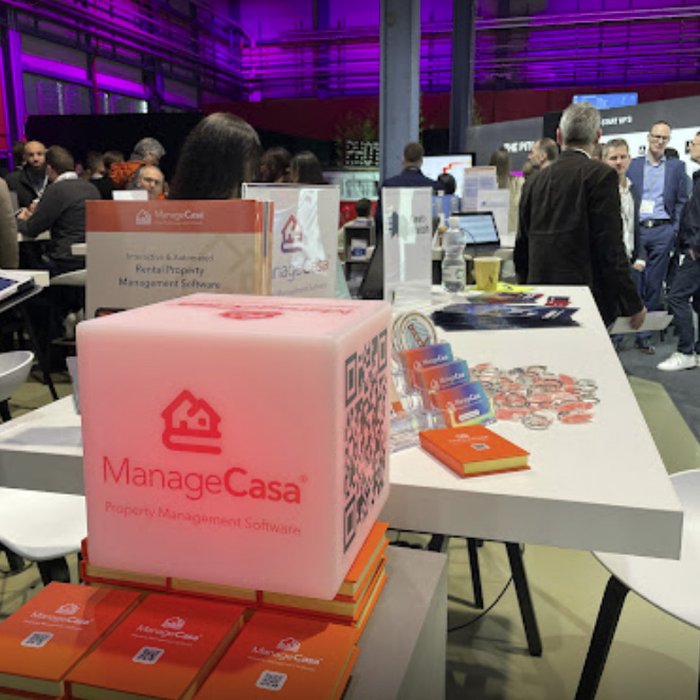Texas Tech University's Custom Branded Lightboxes
Texas Tech University's College of Health & Human Sciences needed branded displays for campus recruitment fairs that would stand out in crowded student spaces.
The Challenge
Texas Tech University's College of Health & Human Sciences struggled to attract students at busy campus fairs. Their regular signs weren't getting noticed in crowded spaces, and they needed something eye-catching that their team could use with minimal setup for events.
Why Lightboxes?
The marketing team chose our custom illuminated lightboxes because they're simply impossible to miss, even at busy events. The rechargeable cordless design meant they could be placed anywhere without hunting for outlets or tripping over cords.
Key advantages included:
- No outlets needed - 8 full hours on a single charge
- Tough enough for bustling student crowds - they're virtually indestructible
- 16 color light modes to match event colors with a click of the remote
- Clean, professional look that impressed leadership
From Concept to Reality
After seeing similar displays online, the team reached out for a quote. They requested mockups showing their logo on the branded displays, which proved essential in winning approval from university leadership. We worked with their procurement department to complete all the necessary vendor documentation and payment procedures.

One week after payment, they received their custom-printed light columns, ready to use. The quick turnaround let them debut the displays at a major upcoming recruitment weekend.
The Impact
The 43-inch (110cm) light columns transformed how students found their booth. Standing well above table height, the glowing displays acted like beacons across crowded rooms, drawing far more visitors than at previous events.
Staff loved being able to place them anywhere without worrying about outlets. For the evening events, they were able to simply switch to the school's signature color, making their brand instantly recognizable.
Standing Out
While neighboring departments used the same old pull-up banners, these glowing branded lightboxes immediately signaled that this college was tech-savvy and modern—whether for recruitment fairs, campus showcases, or student orientation events.
Students naturally gravitated toward the displays, often stopping to ask about them. This created perfect opportunities for staff to start meaningful conversations about degree programs and enrollment.
Tips for Your Events
- Put the displays at doorways so people can find you immediately
- Match your school or company colors with the included remote control
- Mix some tall columns with our smaller table displays for more visual interest
- Change colors throughout your venue to highlight special presentations or signal different phases of your event
- Place near selfie spots to get your brand in students' social media images

Product Details
PK Green offers a wide range of rechargeable LED lightboxes for events — including illuminated cubes, spheres, columns and other shapes designed for branding and displays. Below is what Texas Tech University's College of Health & Human Sciences ordered for their event:
- 43-inch tall (110cm) light columns branded on all four sides
- Remote with 16 colors to match with your event or brand colors
- Runs 8 hours on a charge – no hunting for outlets or messy cables to trip over
- Solid, durable build with lifetime warranty - perfect for long-term use
- Light enough for one person to carry between events
FAQ
What types of university events work best with illuminated recruitment displays?
These work exceptionally well for campus fairs, recruitment weekends, prospective student showcases, orientation events, and department open houses where attracting student attention is crucial. Just like the Texas Tech College of Health & Human Sciences event in this case study, they're perfect when traditional signage gets lost in crowded campus environments filled with competing departments and organizations. Academic program showcases, graduate school fairs, and student organization recruitment especially benefit because the displays create clear visibility beacons that help students navigate busy campus spaces.
How do these solve the visibility problem at crowded campus fairs?
Campus fairs often feature dozens of departments and organizations using identical table setups and pull-up banners that create overwhelming visual noise. Students walking through these events struggle to distinguish between different booths and often miss important opportunities. Illuminated columns stand well above table height, acting like beacons that students can spot from across crowded rooms, naturally drawing them toward your department's information and creating clear navigation points in chaotic campus event environments.
Why does minimal setup matter for busy university staff and faculty?
University marketing teams and faculty often juggle multiple responsibilities beyond event planning - teaching schedules, research commitments, administrative duties, and student meetings all compete for limited time. When setup literally takes minutes without requiring technical coordination or outlet hunting, busy academic professionals can focus on the actual student interactions that drive recruitment success rather than wrestling with complicated display logistics during already stressful campus event periods.
How do these help academic departments demonstrate innovation and modernity to prospective students?
Today's students expect educational institutions to embrace current technology and modern approaches to learning and communication. While neighboring departments use outdated pull-up banners and static signage, custom illuminated displays immediately signal that your college or department stays current with professional trends and invests in quality presentation. This visual impression supports academic reputation and suggests that your programs prepare students for contemporary professional environments.
How do illuminated displays facilitate natural conversation starters with prospective students?
Traditional academic signage often requires students to approach and actively read information before interaction begins. Illuminated displays naturally draw student curiosity, with many asking about the displays themselves, which creates perfect opportunities for staff to transition into conversations about degree programs, research opportunities, and enrollment processes. This approach eliminates awkward cold approaches and creates genuine engagement based on student interest and curiosity.
What university procurement processes do you accommodate for educational institutions?
Universities typically have specific vendor documentation, purchasing procedures, and budget approval processes that differ from commercial transactions. We work with university procurement departments to complete all necessary vendor registration, quote documentation, and payment processing that educational institutions require. This includes detailed specifications, delivery confirmations, and institutional billing that helps academic departments navigate internal approval processes and budget management requirements.
How quickly can you deliver for campus event deadlines and academic calendar constraints?
University events often align with rigid academic calendar deadlines - orientation weekends, registration periods, and semester planning that can't be delayed. We prioritize educational institution orders to ensure delivery well before these critical campus events, just like the Texas Tech order that arrived one week after payment for their major recruitment weekend. This reliability is essential when campus event success directly impacts enrollment and departmental objectives.
How do color-changing capabilities support different university branding and event themes?
Universities often have specific color schemes for different colleges, departments, or event types that need to be maintained for brand consistency and institutional recognition. The remote control flexibility allows instant adaptation to match school colors during formal presentations, department-specific colors for academic showcases, or seasonal themes for special campus events. This versatility ensures consistent institutional branding while allowing customization for specific departmental needs.
What's the impact on student social media engagement and organic campus marketing?
Students naturally photograph and share distinctive campus experiences on social media platforms, extending your department's marketing reach far beyond physical event attendees. When students take selfies near illuminated displays or share photos of innovative campus setups, your academic program gains organic exposure to their entire social networks. This authentic student-generated content often provides more valuable marketing impact than traditional promotional materials.
How do these work for evening campus events and outdoor university functions?
Many university events extend into evening hours - welcome receptions, alumni gatherings, or outdoor campus celebrations where traditional signage becomes difficult to see. The 8-hour battery life easily covers extended campus events, and the illuminated design actually becomes more visible and attractive as natural lighting fades. This consistent visibility ensures your department maintains strong presence throughout entire campus events regardless of timing or venue conditions.
How do I justify the investment to university administration for academic marketing budgets?
University administrators typically evaluate marketing expenditures based on long-term recruitment impact and cost-effectiveness compared to ongoing promotional material expenses. These displays provide years of use across numerous campus events while maintaining professional appearance and department brand consistency. The enhanced student engagement and professional presentation often supports enrollment objectives and academic reputation goals that justify the investment for department leadership.
Where should I position displays for maximum impact during different types of campus events?
Position displays at main entry points and high-traffic pathways where students naturally flow during campus fairs and recruitment events. Place them near registration tables and information areas where students spend time filling out forms or waiting for presentations. For academic showcases, use them to define department spaces within larger venue areas, ensuring your program remains visible even when students are exploring multiple options throughout the campus event.
How do I coordinate with other campus departments and avoid conflicts during shared events?
Campus fairs often involve multiple departments competing for student attention within shared venues, requiring coordination to ensure effective presentation without interference. The portable, cordless design allows flexible positioning that adapts to space assignments and avoids conflicts with neighboring department setups. Clear visibility also helps students distinguish between different academic programs more easily, reducing confusion and ensuring each department can effectively communicate their unique value propositions.
What about long-term durability for regular campus event use throughout the academic year?
Universities typically host multiple recruitment and engagement events throughout each academic year, making durable displays essential for consistent department presentation. The lifetime warranty and virtually indestructible construction handle regular transport between campus venues, student interaction, and the demanding schedules that academic calendar requirements create. Many departments find they become permanent assets that enhance recruitment efforts across multiple academic years while maintaining professional appearance.
How do I get started with university recruitment display enhancement?
Just like the Texas Tech College of Health & Human Sciences marketing team in this case study, start by requesting mockups showing your department logo and university branding on illuminated displays. This visualization helps secure approval from university leadership and demonstrates clear value for student recruitment objectives. Fill out our online inquiry form with your academic department requirements and upcoming campus event schedule, and we'll provide comprehensive mockups showing how illuminated displays can transform your student engagement and recruitment success at campus fairs and university events.




